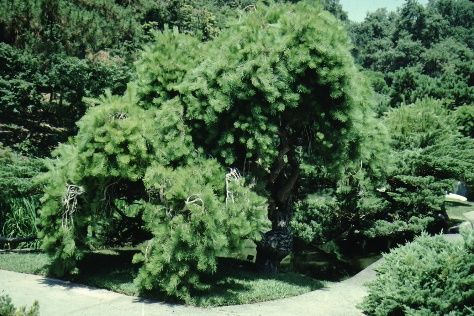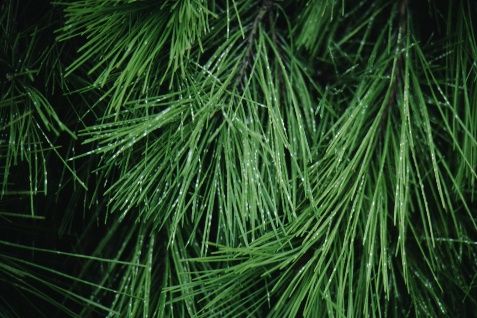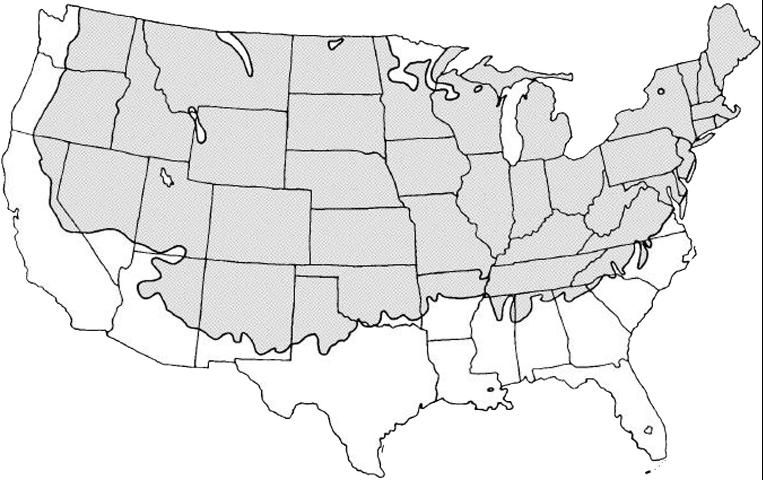Introduction
Japanese red pine reaches a height and spread of 30 to 50 feet in the landscape, growing much taller in the woods. Needles are arranged in pairs and remain on the tree for about three years. A distinguishing feature of this tree is the often crooked or sweeping trunk that shows reddish-orange peeling bark. Because lower branches are held nearly horizontal on the trunk forming a picturesque silhouette in the landscape, it is used best as a specimen, not as a mass planting. Needles may turn yellowish during winter on some soils.

Credit: Edward F. Gilman, UF/IFAS

Credit: Edward F. Gilman, UF/IFAS
General Information
Scientific name: Pinus densiflora 'Pendula'
Pronunciation: PYE-nuss den-siff-FLOR-ruh
Common name(s): weeping Japanese red pine
Family: Pinaceae
Plant type: tree
USDA hardiness zones: 3B through 7A (Figure 3)
Planting month for zone 7: year-round
Origin: not native to North America
Invasive potential: not known to be invasive
Uses: bonsai
Availability: grown in small quantities by a small number of nurseries

Credit:
Description
Height: 6 to 10 feet
Spread: 10 to 15 feet
Plant habit: weeping; spreading
Plant density: dense
Growth rate: slow
Texture: fine
Foliage
Leaf arrangement: spiral
Leaf type: simple
Leaf margin: entire
Leaf shape: needle-like (filiform)
Leaf venation: parallel
Leaf type and persistence: evergreen
Leaf blade length: 4 to 8 inches
Leaf color: green
Fall color: no fall color change
Fall characteristic: not showy
Flower
Flower color: yellow
Flower characteristic: inconspicuous and not showy
Fruit
Fruit shape: oval
Fruit length: 1 to 3 inches
Fruit cover: dry or hard
Fruit color: tan
Fruit characteristic: persists on the plant
Trunk and Branches
Trunk/bark/branches: typically multi-trunked or clumping stems; no thorns
Current year stem/twig color: green
Current year stem/twig thickness: medium
Culture
Light requirement: plant grows in full sun
Soil tolerances: acidic; well-drained; sand; loam
Drought tolerance: moderate
Soil salt tolerances: poor
Plant spacing: not applicable
Other
Roots: usually not a problem
Winter interest: plant has winter interest due to unusual form, nice persistent fruits, showy winter trunk, or winter flowers
Outstanding plant: plant has outstanding ornamental features and could be planted more
Pest resistance: long-term health usually not affected by pests
Use and Management
The tree prefers a site with full sun and a well-drained, slightly acid soil. Clay soil is usually not suitable unless it is very well drained.
There a few cultivars: 'Alboterminata'—yellowish needle tips; 'Aurea'—yellow needles; 'Oculis-draconis'—dragon's eye pine—two yellow lines on needles; 'Umbraculifera' - Tanyosho pine—20 feet tall, multi-trunked.
Propagation is by seed.
Pests and Diseases
This tree is usually pest-free, with occasional scale, but the list of potential problems is long.
Some of its diseases are needle blight and rusts. Canker diseases may cause dieback of landscape pines. Keep trees healthy and prune out the infected branches.
Needle cast is common on small trees and plantation or forest trees. Infected needles yellow and fall off.